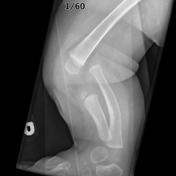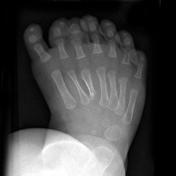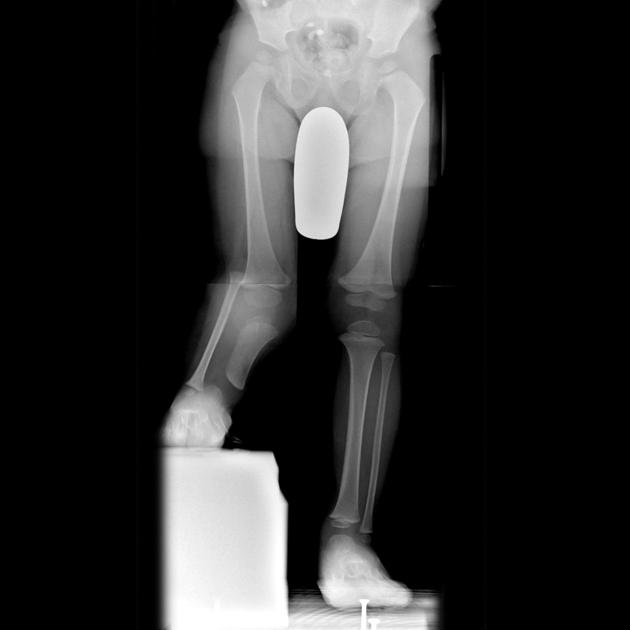Presentation
Short right leg
Patient Data
Age: 9 months



Download
Info

Short right tibial and fibula with small epiphyses. Upward shift of the fibula.
Right foot polydactyly (seven metatarsals and toes). Internal foot inversion noted.
Download
Info

Short right leg due to short tibia (tibial hemimelia), upward shift of fibula, and genu valgum.
Normal left lower limb.
Case Discussion
X-rays of the right lower limb demonstrate tibial hemimelia and polydactyly.




 Unable to process the form. Check for errors and try again.
Unable to process the form. Check for errors and try again.